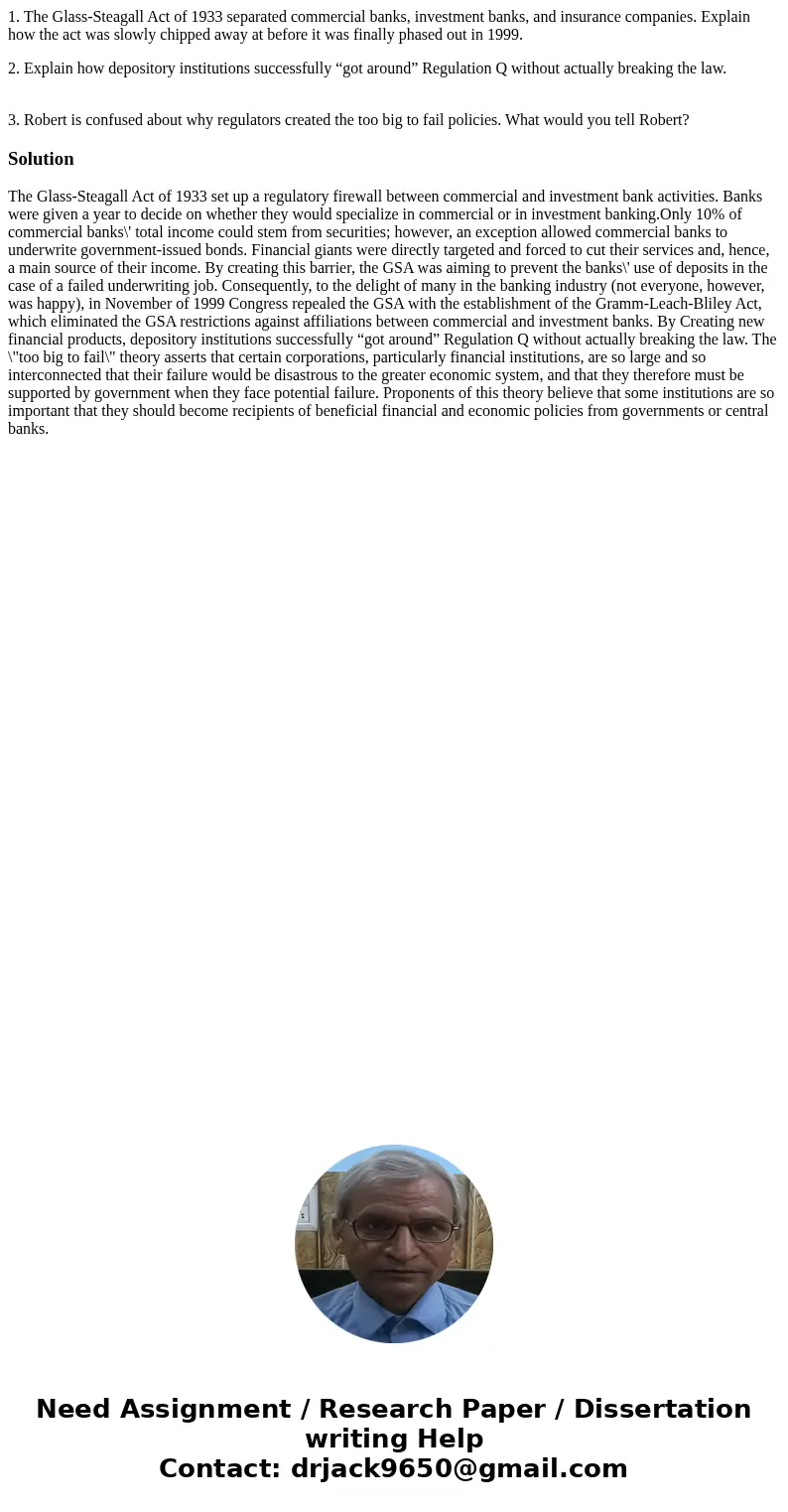1 The GlassSteagall Act of 1933 separated commercial banks i
1. The Glass-Steagall Act of 1933 separated commercial banks, investment banks, and insurance companies. Explain how the act was slowly chipped away at before it was finally phased out in 1999.
2. Explain how depository institutions successfully “got around” Regulation Q without actually breaking the law.
3. Robert is confused about why regulators created the too big to fail policies. What would you tell Robert?
Solution
The Glass-Steagall Act of 1933 set up a regulatory firewall between commercial and investment bank activities. Banks were given a year to decide on whether they would specialize in commercial or in investment banking.Only 10% of commercial banks\' total income could stem from securities; however, an exception allowed commercial banks to underwrite government-issued bonds. Financial giants were directly targeted and forced to cut their services and, hence, a main source of their income. By creating this barrier, the GSA was aiming to prevent the banks\' use of deposits in the case of a failed underwriting job. Consequently, to the delight of many in the banking industry (not everyone, however, was happy), in November of 1999 Congress repealed the GSA with the establishment of the Gramm-Leach-Bliley Act, which eliminated the GSA restrictions against affiliations between commercial and investment banks. By Creating new financial products, depository institutions successfully “got around” Regulation Q without actually breaking the law. The \"too big to fail\" theory asserts that certain corporations, particularly financial institutions, are so large and so interconnected that their failure would be disastrous to the greater economic system, and that they therefore must be supported by government when they face potential failure. Proponents of this theory believe that some institutions are so important that they should become recipients of beneficial financial and economic policies from governments or central banks.
 Homework Sourse
Homework Sourse